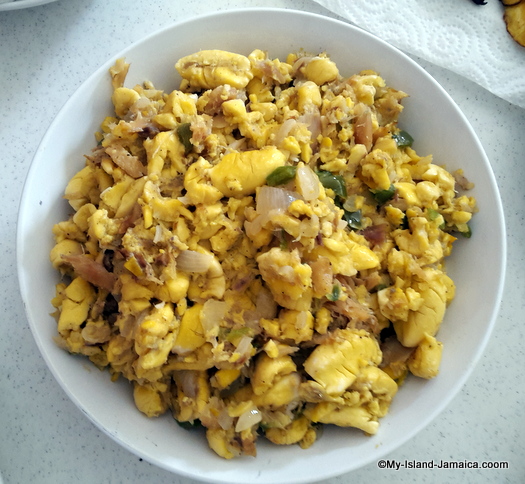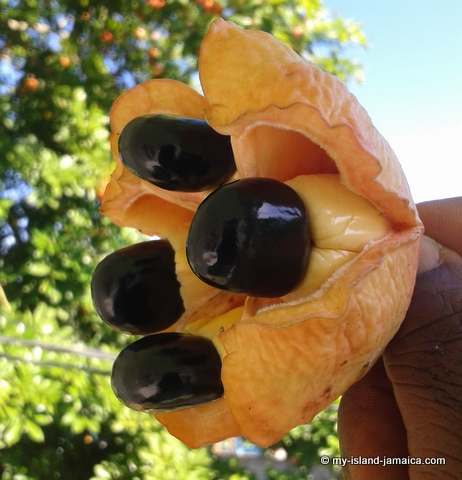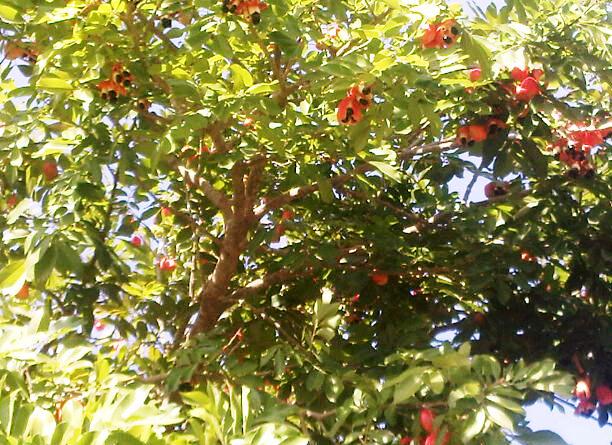Subscribe for all my updates and don't miss a thing! Sign me up!
Jamaican Ackee
It's Versatility and History
Sharing Is Caring! Share this awesome content with your friends now.
Jamaican Ackee, contributed
According to one writer, if there was a code word for all Jamaicans it probably would be Ackee. Not only is ackee a key ingredient our national dish - 'ackee and saltfish', it is also officially the national fruit and a national symbol of Jamaica.
New! Take a piece of Jamaica with you💃!
Savour the memories! Now you can get your authentic Jamaican souvenir items, as well as traditional Jamaican herbs, spices and housewares on our popular e-store. Click Here to learn more.
And, if you ever need a trustworthy and knowledgeable local guide, consider booking a private tour with us!
The tree is not endemic to the Caribbean but rather, was introduced from West Africa in the 18th century during the slave trade. Its name is derived from the West African Akye fufo.
It was first introduced to Jamaica, then later to Haiti, Cuba, Puerto Rico, Barbados and others. It was subsequently introduced to Florida in the United States.
The
plant was named Blighia sapida in honour of Captain William Bligh who,
in 1793, took samples to Kew Gardens in South London.
Ackee trees are found all across Jamaica. There are two bearing seasons: between January to March and June to August- although my yard tree appears to bear right throughout the year!
The fruit turns red on reaching maturity and splits open with continued exposure to the sun.
Traditionally it is at this time that the ackees are harvested and the edible portion (the arilli) removed and cleaned in preparation for cooking.
This delicacy is enjoyed by many at breakfast or as an entree. Along with saltfish (cod) used in our national dish, Jamaican ackee is a favourite for many when served with pork, salted mackerel, tinned mackerel, etc.
There is now also ackee quiche, ackee stuffed peppers, cream of ackee soup, ackee stuffed chicken leg, ackee pizza, and the now - increasingly popular ackee punch!
The canned product is exported to ethnic markets worldwide and continues to be enjoyed by both visitors to the island and Jamaicans residing overseas.
In terms other uses, the oil of the ackee arils contains many important nutrients, especially fatty acids. Linoleic, palmitic and stearic acids are the primary fatty acids found in the fruit.
The dried seeds, fruit bark and leaves are used medicinally while the fruit is used to produce soap in some parts of Africa.
In 2006, one of our local communities, Linstead in St. Catherine, hosted the Inaugural Ackee Festival, where all types and varieties of preparations of ackee were showcased.
So although it is not indigenous to Jamaica, it has remarkable historic and cultural associations here.
And by the way other names and variant spellings include Akee, akee apple, Achee, or vegetable brain!
Watch Video! How To Make Ackee Oil!
So we use ackee mainly as food, as in our national dish, but did you know that ackee can produce healthy, organic moisturizing oil? Oh yeah!
And Hephzibah from @iamhephzibahTV shares this 'never before' seen procedure on how to make it!

References:
1. "Jamaican Ackee", The Department of Chemistry, UWI Mona. .
2. "Ackee", Wikipedia.com 3. "The Ackee Fruit", The Science Creative Quarterly.
3. "Ackee", About.com.
4. "A Book Dedicated to Ackee", Jamaica Gleaner.
5. "Ackee Festival for Linstead", Jamaica Information Service.
Originally Posted: 9/25/2009
Pages Related To Jamaican Ackee
- Delectable Jamaican Food
- National Symbols of Jamaica
- Visitor Related Q&A
- Our User Forums
- Our Blog Page.
- AND EVEN MORE...Search Here
Return to Jamaican Food from Jamaican Ackee
Return to My Island Jamaica from Jamaica Ackee
New! Get My Latest Book👇🏿
|
You asked, I've answered! You no longer need to save for months or years, to enjoy paradise! I spilled the beans! sharing my top tips on finding cozy accommodations and secret gems, only the way a native could! Click Here to pick it up on my e-store and start saving now! |
See The Best Of Jamaica - In Videos!
|
My channel reaches over 140,000 subscribers worldwide and has leveraged over 11 million views, sharing, what I call 'The Real Jamaica'. Subscribe today and join our family of viewers. |
Read More ...
New! Experience The REAL Jamaica!
Book Your Private Tour here and experience Jamaica the way we (locals) do!
P.S. Didn't find what you were looking for?
Still need help?
Click Here to try our dependable and effective Site Search tool. It works!
Or, simply click here and here, to browse my library of over 500 questions and answers! Chances are someone already asked (and got an answer to) your question.















New! Comments
Have your say about what you just read! Leave me a comment in the box below.